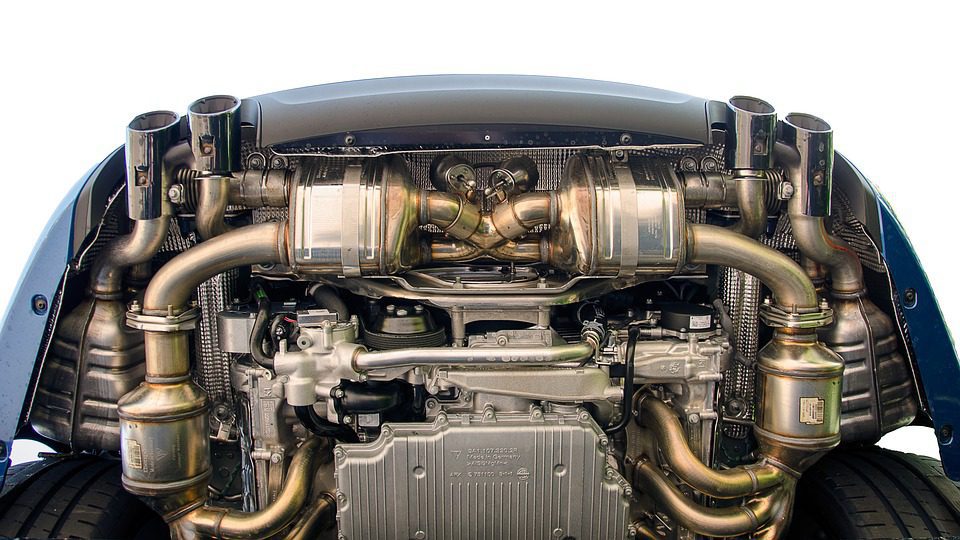In-Depth Exam of the Mechanical Components of a Hatchback's Electric motor
Comprehending the complex workings of a hatchback's motor is similar to untangling a complex challenge where every item plays an important role in the overall efficiency of the vehicle. As we dig right into the internal operations of these mechanical wonders, a deeper gratitude for the harmony of elements that drive a hatchback onward arises.
Pistons and Cylinders

The effectiveness and efficiency of a hatchback's engine count heavily on the smooth procedure of the cylinders and pistons. Correct sealing between the piston rings and cylinder walls is crucial to preserve compression and prevent loss of power. In addition, the size and layout of the cylinders straight influence the engine's displacement and general power result. Normal maintenance and tracking of these elements are necessary to make certain optimal engine efficiency and long life.
Camshafts and Crankshafts
Camshafts and crankshafts play crucial roles in the operation of a hatchback's interior combustion engine, promoting precise timing and conversion of linear motion into rotational energy. The camshaft, located within the engine block, manages the opening and closing of the engine valves at particular periods. As the camshaft rotates, its lobes push versus the shutoffs, permitting air and gas right into the burning chamber and getting rid of exhaust gases. This procedure synchronizes with the movement of the pistons to guarantee optimal engine efficiency.
On the various other hand, the crankshaft, attached to the pistons via attaching rods, converts the straight movement of the pistons into rotational activity. This rotational power is then moved to the transmission and inevitably to the wheels, pushing the vehicle onward. The accurate sychronisation between the camshaft and crankshaft is essential for the engine to run effectively and produce power efficiently. Any type of imbalance or breakdown in these elements can cause engine efficiency problems and potential damages. Regular upkeep and timely replacements are essential to ensure the smooth procedure of these vital engine parts in a hatchback.
Valves and Timing Belts
Playing a vital duty in the synchronization and procedure of a hatchback's inner combustion engine, the valves and timing belts function in combination with the camshafts and crankshafts to ensure optimal efficiency. Valves regulate the circulation of air and gas into the burning chamber while removing exhaust gases. The timing belt, also referred to as the camera belt, integrates the turning of the camshaft and crankshaft, making sure that the valves open and close at the appropriate times in relation to the piston placement. Appropriate timing is essential for the engine to operate effectively and stop damages as a result of navigate to this site disturbance between relocating parts.

Gas Injectors and Ignition System
Fuel injectors and trigger plugs are essential elements in a hatchback's engine system, responsible for the reliable shipment of gas and ignition of the air-fuel blend. Modern hatchbacks typically use electronic fuel injection systems that can adjust fuel shipment based on various aspects such as engine load, rate, and temperature.
Appropriately working trigger plugs are crucial for engine efficiency, fuel effectiveness, and emissions regulate. Routine evaluation and upkeep of both fuel injectors and stimulate plugs are essential to make sure the engine operates efficiently and successfully.
Cooling System and Lubrication
Offered the important role of keeping optimal engine efficiency and performance in a hatchback, the air conditioning system and lubrication devices are essential components that ensure correct functioning and longevity of the car. The air conditioning system in a hatchback is accountable for controling the engine temperature to avoid overheating. It generally consists go to my site of a radiator, water pump, thermostat, and cooling fan, working together to dissipate warmth generated throughout engine operation. Appropriate lubrication is equally important as it decreases rubbing in between relocating parts, protecting against damage. The lubrication system in a hatchback consists of the oil pump, oil filter, and different lubricating substances that decrease rubbing within the engine. Regular maintenance of the cooling system entails examining coolant degrees, evaluating for leakages, and guaranteeing correct performance of cooling elements. Constant oil adjustments and utilizing the recommended lubricating substances are necessary for the lubrication system's efficiency. Together, the air conditioning system and lubrication mechanisms play a vital function in keeping the hatchback's engine running efficiently and successfully.
Final Thought

Pistons and cyndrical tubes are integral elements within the internal burning engine of a hatchback, liable for transforming fuel into mechanical power. The camshaft, situated within the engine block, manages the opening and closing of the engine shutoffs at specific intervals.Playing an important function in the synchronization and procedure of a hatchback's internal combustion engine, the shutoffs and timing belts function in conjunction with the camshafts and crankshafts to make sure ideal performance.Fuel injectors and spark plugs are essential parts in a hatchback's engine system, accountable for the reliable shipment of gas and ignition of the air-fuel combination. Modern hatchbacks typically use digital gas injection systems that can readjust fuel shipment based on different variables such as engine load, temperature level, and rate.
Comments on “Where to Discover the most effective Opel Corsa Engine for Substitute”